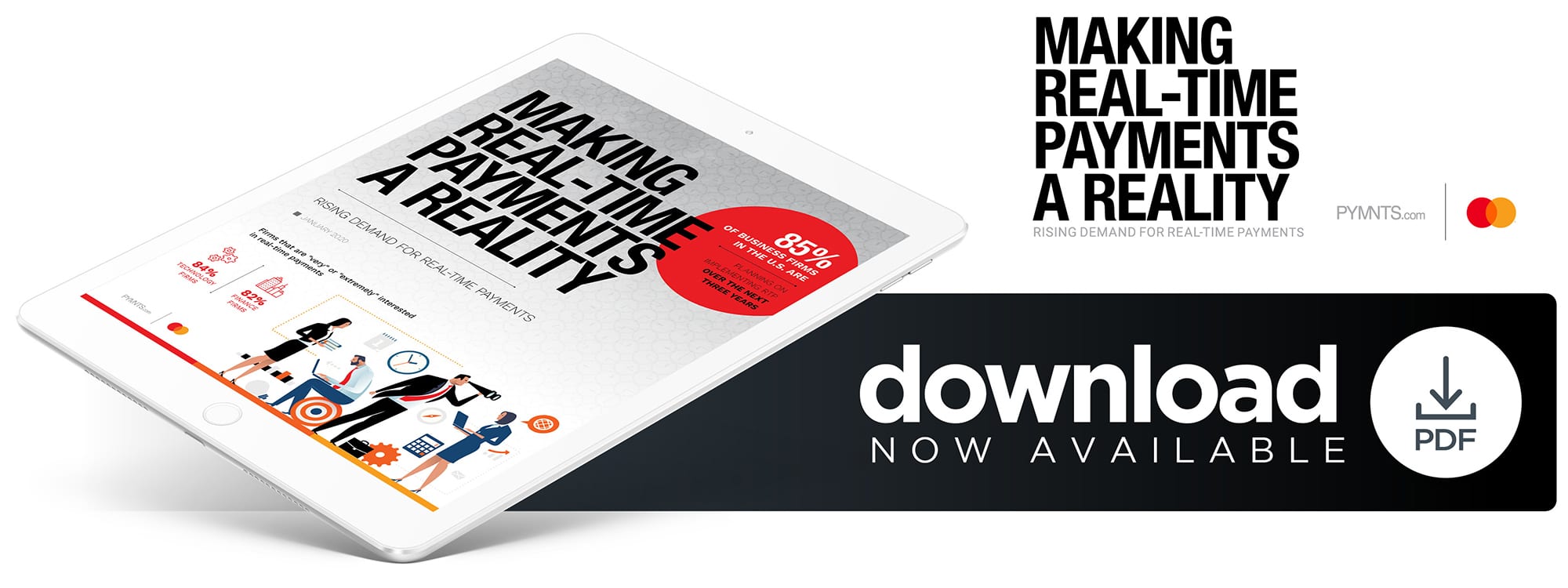New Data: 85 Pct. Of Businesses Have Real-Time Payments On Their Roadmaps – Here’s Why

 The Clearing House launched Real-Time Payments (RTP) two years ago, enabling financial institutions in the U.S. for the first time to send and receive payments instantaneously, 24/7 year-round. Yet, the question remained as to whether Real-Time Payments would resonate with businesses as a transformational system.
The Clearing House launched Real-Time Payments (RTP) two years ago, enabling financial institutions in the U.S. for the first time to send and receive payments instantaneously, 24/7 year-round. Yet, the question remained as to whether Real-Time Payments would resonate with businesses as a transformational system.
 PYMNTS’ latest research strongly suggests that knowledge of Real-Time Payments is, in fact, spreading far and wide among U.S. businesses. A majority of firms consider themselves very aware of Real-Time Payments, and are very interested in implementing the system. This is demonstrated most clearly by the finding that firms today can identify a wide range of potential benefits to the system that go well beyond speed.
PYMNTS’ latest research strongly suggests that knowledge of Real-Time Payments is, in fact, spreading far and wide among U.S. businesses. A majority of firms consider themselves very aware of Real-Time Payments, and are very interested in implementing the system. This is demonstrated most clearly by the finding that firms today can identify a wide range of potential benefits to the system that go well beyond speed.
In the Making Real-Time Payments A Reality: Rising Demand For Real-Time Payments report, a Mastercard collaboration, PYMNTS analyzes U.S. businesses’ evolving awareness, interest and potential adoption of the system. The report is based on a survey of more than 500 financial executives at firms from numerous sectors, including professional services, construction, retail and technology.
According to the research, 66.7 percent of executives consider themselves “very” or “extremely” aware of Real-Time Payments, while 71.9 percent said they are “very” or “extremely” interested in the system. Indeed, 85.3 percent are either currently implementing RTP or plan to do so within the next three years.
One of the factors behind this may be financial leaders’ rising expectations for how payment systems should operate. In this sense, RTP may be seen as an integral part of wider efforts to streamline treasury and accounts payable operations, as well as shed the inefficiencies of manual and paper-based processes.
The research has revealed that when it comes to the leading factors driving satisfaction with payment methods, speed of processing is just one of several, but not the leading factor. The top factors cited by respondents are ease and convenience (cited by 54.1 percent), ease of implementation (49.4 percent), availability of good payments data (46.9 percent) and fast processing (45.5 percent).
 These criteria dovetail with Real-Time Payments’ wide-ranging capabilities, and firms are increasingly aware of this. In PYMNTS’ 2018 The B2B Payments Tipping Point study, only one feature of Real-Time Payments was considered “very” or “extremely” valuable by more than 70 percent of firms: enhanced fraud and security.
These criteria dovetail with Real-Time Payments’ wide-ranging capabilities, and firms are increasingly aware of this. In PYMNTS’ 2018 The B2B Payments Tipping Point study, only one feature of Real-Time Payments was considered “very” or “extremely” valuable by more than 70 percent of firms: enhanced fraud and security.
In the latest report, however, six features were viewed this way, including fraud and security (78.3 percent), 24/7 year-round service (76.9 percent), improved reconciliation with enhanced data (76.7 percent) and instant funds availability (76 percent). Robust messaging capabilities stand out as another feature surging in appeal: 63.8 percent of firms cited this, up from 46.5 percent in 2018.
In a similar way, executives have a broader view of how Real-Time Payments could benefit their business operations. The number of cited benefits has doubled since 2018, including improved process efficiency (cited by 50.4 percent of firms), improved cash flow (49.6 percent), flexibility (47.2 percent), greater supplier satisfaction (44.5 percent), greater access to data (42.3 percent) and enhanced fraud protection (41.8 percent).
For more insights on the changing attitudes of U.S. businesses toward Real-Time Payments, and the keys to driving greater adoption, download the report.
